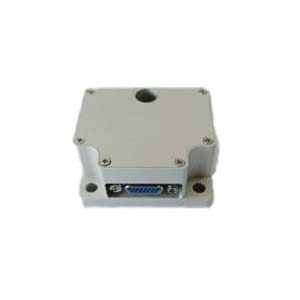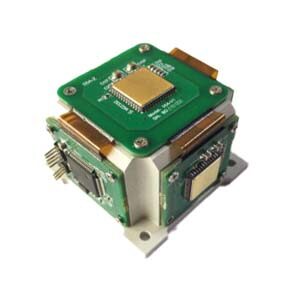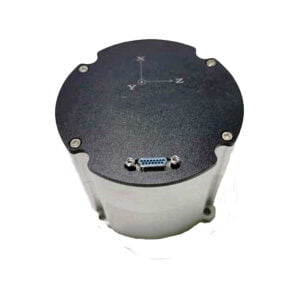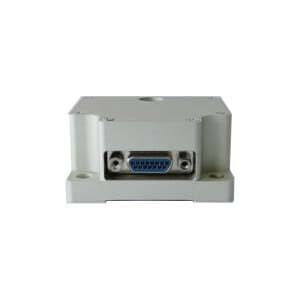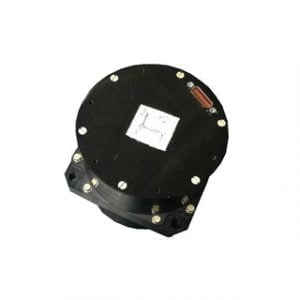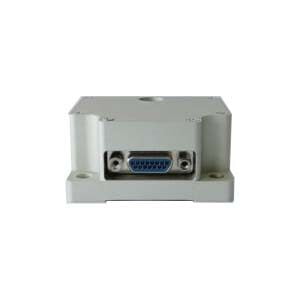An attitude and heading reference system (AHRS) consists of sensors on three axes that provide attitude information for aircraft, including roll, pitch and yaw. These are sometimes referred to as MARG (Magnetic, Angular Rate, and Gravity) sensors and consist of either solid-state or microelectromechanical systems (MEMS) gyroscopes, accelerometers and magnetometers. They are designed to replace traditional mechanical gyroscopic flight instruments.
The reference of AHRS comes from the gravity field of the Earth and the magnetic field of the earth, its static accuracy depends on the measurement accuracy of the magnetic field and the measurement accuracy of the gravity, and the gyro determines its dynamic performance. AHRS does not work properly away from the Earth's gravity and magnetic field environment, and note that the more orthogonal the magnetic and gravitational fields are, the better the attitude measurement is. This is the defect of the attitude system, the course Angle error will become larger and larger at high latitudes.
Inertial Measurement Unit (IMU) is a device that uses an acceleration sensor and gyroscope to measure the acceleration and rotational angular velocity of a target system to obtain the target's motion and status in the inertial reference frame. An IMU consists of three single-axis accelerometers and three single-axis gyros. The accelerometer detects the acceleration signal of the object in the carrier coordinate system independently of three axes, while the gyro detects the angular velocity signal of the carrier relative to the navigation coordinate system, measures the angular velocity and acceleration of the object in three-dimensional space, and calculates the attitude of the object based on it.
System reference distinction
The reference frame chosen by AHRS for measurement is the Earth itself, and the location of its measurement object is also a specific geographical location. The IMU inertial measurement unit is different in that it measures the position and motion state relative to a specific inertial reference frame, which can be a fixed point such as a house, a building, or a system of uniform motion. Conceptually, inertial measurement units are more widely used because the Earth, the reference point of AHRS, is also an inertial reference frame (not absolutely, Earth-only). Using the Sun as the inertial reference frame in the solar system).
System composition distinction
Although the measuring elements of AHRS and IMU are basically the same, due to the different reference systems of AHRS, AHRS has more electronic compasses than IMU. When the AHRS is monitoring the motion trajectory and condition, due to the problem of time drift of the gyroscope, the error will become larger and larger as time goes by when integrating the rotation Angle during the movement. Therefore, the electronic compass is needed to calibrate the geographical azimuth Angle of the movement in time.
The key difference between an inertial measurement unit (IMU) and an AHRS is the addition of an on-board processing system in an AHRS which provides attitude and heading information versus an IMU which just delivers sensor data to an additional device that computes attitude and heading. In addition to attitude determination an AHRS may also form part of an inertial navigation system.
A form of non-linear estimation such as an Extended Kalman filter is typically used to compute the solution from these multiple sources.
AHRS have proven themselves to be highly reliable and are in common use in commercial and business aircraft. AHRS are typically integrated with electronic flight instrument systems (EFIS) which are the central part of so-called glass cockpits, to form the primary flight display. AHRS can be combined with air data computers to form an "air data, attitude and heading reference system" (ADAHRS), which provide additional information such as airspeed, altitude and outside air temperature.
Scope of application
AHRS is not as widely used as IMU because of its choice of reference system. AHRS is usually used in aviation flight measurement, remote control of ground motor vehicles, unmanned aerial vehicle tracking and other fields by using sensors such as electronic compass. Due to the flexible and variable reference frame of the IMU, inertial measurement is commonly used in oil exploration, drilling and production systems, mobile mapping systems and attitude reference systems for vehicle and ship attitude measurement and so on.
For more information, please feel free to contact info@ericcointernational.com
More Technical Questions
1.Difference between AHRS and IMU
2.Differences between IMU, AHRS, VRU and INS
3.What do 6-axis, 9-axis, IMU, VRU and AHRS refer to?
4.How to apply MEMS sensor in Oil & GasᅵAerospaceᅵAHRSᅵUAV?
5.AHRS Attitude Reference System
Products in Article
